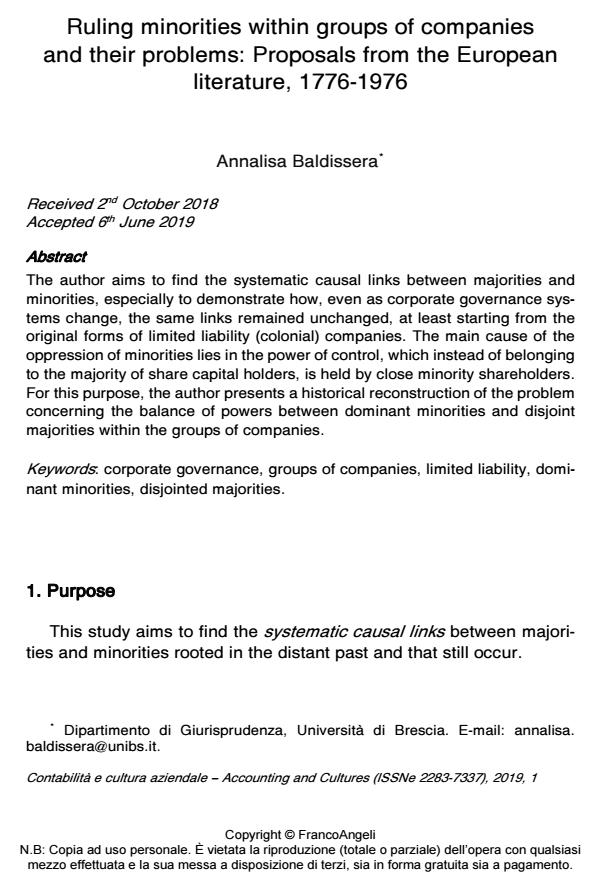Ruling minorities within groups of companies and their problems: Proposals from the European literature, 1776-1976
Journal title CONTABILITÀ E CULTURA AZIENDALE
Author/s Annalisa Baldissera
Publishing Year 2019 Issue 2019/1
Language English Pages 29 P. 31-59 File size 237 KB
DOI 10.3280/CCA2019-001003
DOI is like a bar code for intellectual property: to have more infomation
click here
Below, you can see the article first page
If you want to buy this article in PDF format, you can do it, following the instructions to buy download credits

FrancoAngeli is member of Publishers International Linking Association, Inc (PILA), a not-for-profit association which run the CrossRef service enabling links to and from online scholarly content.
The author aims to find the systematic causal links between majorities and minor-ities, especially to demonstrate how, even as corporate governance systems change, the same links remained unchanged, at least starting from the original forms of limited liability (colonial) companies. The main cause of the oppression of minorities lies in the power of control, which instead of belonging to the major-ity of share capital holders, is held by close minority shareholders. For this pur-pose, the author presents a historical reconstruction of the problem concerning the balance of powers between dominant minorities and disjoint majorities within the groups of companies.
Keywords: Corporate governance, groups of companies, limited liability, dominant minorities, disjointed majorities.
Annalisa Baldissera, Ruling minorities within groups of companies and their problems: Proposals from the European literature, 1776-1976 in "CONTABILITÀ E CULTURA AZIENDALE" 1/2019, pp 31-59, DOI: 10.3280/CCA2019-001003